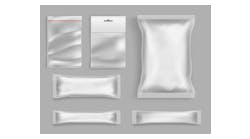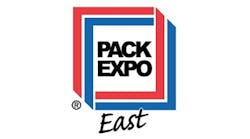Packaging for cannabis products evolves as new products appear and the promise of a bigger marketplace looms
The two principal purposes of packaging are to protect the product it carries and the consumer who buys it, and to market that product to purchasers, both directly and indirectly. The package must provide protection against anything — physical or environmental — that might damage the product. It also has to be sealed in a way that prevents pilferage or opening by someone — a child, for example — who might be harmed by the product. Security is task one.
Protecting the product is the easier job. For marketers, the choice of package format is more of a challenge. The feel of a glass container in the consumer’s hand instantly projects quality. On the other hand, the space available on the side of a flexible pouch offers more opportunity for expansive, colorful graphics that draw consumers’ eyes. Putting the glass jar into a paperboard carton with colorful graphics combines the two. There are as many choices as there are packaging formats. But which will work most effectively for your product?
Packaging has always presented a challenge for brand owners, but in the fast-evolving cannabis industry, with new products appearing seemingly every week — each needing a package that will provide reliable protection and effective marketing — the challenge is especially critical. These new products range across a wide number of forms — dried, concentrated powders and liquids, edibles, medications — which makes choosing among the multiple packaging formats even more complex.
The packaging process
As cannabis industry companies choose their packaging, they also need to weigh how that packaging can be most effectively filled. Early cannabis flower producers, for example, filled pouches or jars by hand, since the delicate flower buds were easily damaged and varied widely by size and weight. Yet filled packages had to match the weight shown on labeling. Manual packaging could involve up to 10 people around a table weighing buds and filling packages. Clearly, as demand grew, this packaging operation would quickly become unsustainable.
High-speed automated packaging common to traditional food and beverage packaging operations did not originally seem to be gentle enough in its product handling to package delicate cannabis buds, but machine manufacturers worked closely with cannabis companies to develop systems that were able to effectively automate the sorting, weighing and packaging process, and to do it more quickly. As a result, automated processes are increasingly being developed that meet the specific needs of cannabis bud packaging.
This is also true of infused beverage products, where blending and filling processes that may have been manual when companies were starting up are now becoming automated, ensuring consistency across larger volumes of packaged products. And finished products that were manually packed in corrugated cases are now beginning to be shrink-wrapped by automated systems.
What began as small-volume, local market operations just a few years ago have grown to where they are having to become industrial-strength in their processing, filling and end-of-line operations
Product variations
According to research by BDS Analytics, as recently as 2017 cannabis flowers represented 50% of the total cannabis market. By 2019, that percentage had been reduced to 36%. That does not necessarily mean that cannabis flowers have become less popular with consumers, but it indicates how the market is changing. As multiple new cannabis-based products are introduced, flowers as a percentage of the whole are reduced.
As these products in new formats have appeared — concentrates, edible food and beverage cannabis-infused products and medical cannabis products — each has required unique packaging that can carry it successfully into an increasingly crowded marketplace where it must stand out to thrive. Brand owners have had to consider packaging in a new light, placing greater emphasis on brand image and the package’s ability to better position products against the increasing competition.
Today, companies packaging cannabis flowers and infused products cannot ship them across state lines. Once regulatory approval for some or all products is granted, the processing and packaging capabilities of many companies will need to be able to accommodate rapidly increasing volumes. Products will be shipped over longer distances, be subject to new environmental forces and weight will become a cost factor that will affect packaging choices. When evaluating packaging forms and packaging equipment today, companies should consider the potential challenges of the impending future.
Mark Suchy is vice president for sales & marketing at Massman Automation Designs, LLC. The Massman Companies were early providers of automated filling and packaging systems for the cannabis industry, and continue to do so. They have been leaders in the design and manufacture of easy-to-operate, highly innovative filling and packaging equipment for more than 40 years.
Massman Companies


